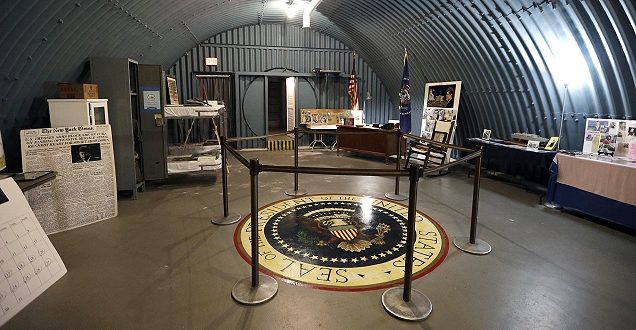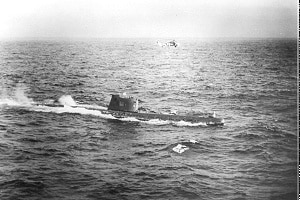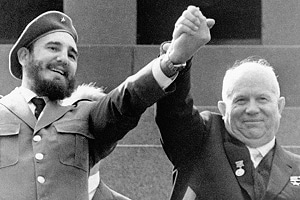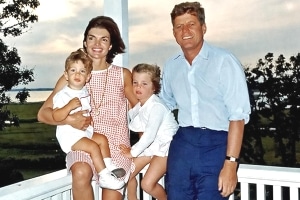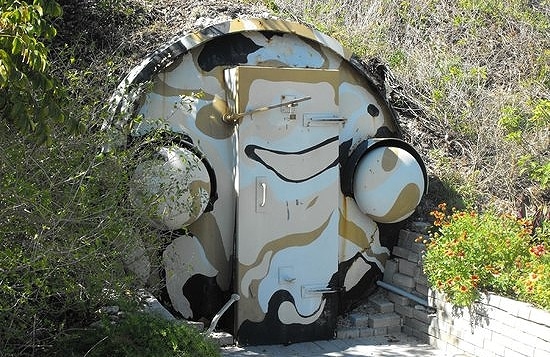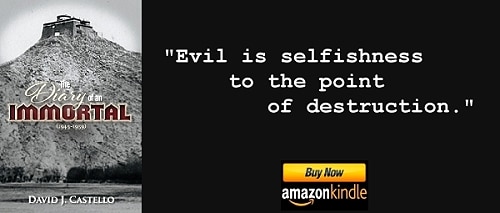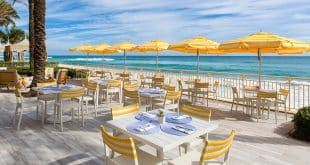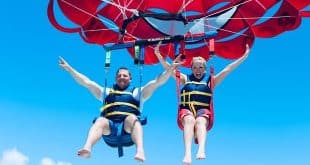On October 27, 1962, during the Cuban Missile Crisis, the aircraft carrier USS Randolph and eleven destroyers detected the Soviet diesel-electric submarine B-59 in the Windward Passage between the southern-most tip of Cuba and Haiti. They began depth charging, totally unaware that the Soviet submarine was carrying a nuclear torpedo possessing two-thirds the power of the bomb dropped on Hiroshima. Like the footsteps of an approaching monster, every depth charge explosion rocked the sub with increasing intensity. The air conditioning failed and the temperature inside soared to a sweltering 120 degrees. Drenched in sweat, the B-59’s captain cursed his American tormentors and feared his submarine could implode at any moment, instantaneously killing all of the seventy men aboard.
Captain Valentin Savitsky and his Political Officer Ivan Semonovich Maslennikov voted to launch their nuclear torpedo to obliterate the American ships. Ordinarily, those two votes would have been enough, but on this day the submarine flotilla’s commander, 34-year-old Vasily Arkhipov, happened to be aboard the B-59. Technically, he was second-in-command. His vote was essential. It had to be unanimous to launch the nuke.
In the midst of chaos, Arkhipov calmly voted “No” and the damaged sub surfaced.
That’s how close we came in October 1962 to World War Three. One vote. Everyone reading this article should raise a toast to Vasily Arkhipov (he died in Russia of kidney cancer in 1998). He kept his cool when most would’ve launched that nuclear torpedo. Vasily knew that a nuclear strike against the Americans would set off a chain reaction killing millions of men, women and children. A shy and humble man, he did not want that on his conscience. If Vasily had voted “Yes” many reading this article would not be alive today.
In 1933, John F. Kennedy’s father, Joseph P. Kennedy, purchased an 11,334-square-foot estate at 1095 North Ocean Boulevard on the north end of the island of Palm Beach for $120,000. After JFK was elected President in 1960, the six-bedroom Kennedy estate became his winter White House.
In January 1959, Fidel Castro and his rebel forces took control of Cuba. That April, at the invitation of the American Society of Newspaper Editors, Castro flew to the United States to speak at the Council on Foreign Affairs. He hoped to meet President Dwight D. Eisenhower, but the president rebuffed him and went to play golf. In October 1960, the United States began their economic embargo on Cuba. Castro retaliated by nationalizing American businesses, but the Cubans were starving. In desperation, he turned to the Soviet Union for economic relief.
The Soviets were shocked. Their premier, Nikita Khrushchev, had assumed that Castro was a stooge for the CIA. Regardless, the U.S.S.R. began helping Cuba by trading fuel for sugar. As their relationship grew economically, politically and militarily, it steadily worsened between the United States and Cuba. Eisenhower began planning the Bay of Pigs invasion to remove Castro and the newly elected Kennedy administration in November 1960 inherited a nightmare. Their chief nuclear nemesis, the U.S.S.R., now had a loyal and armed ally only 90 miles south of Key West, Florida.
The Secret Service knew that the President would be spending time at the Kennedy estate in Palm Beach. In the event of a missile attack, there would not be enough time to get JFK and his family to safety. Even a race across the Intracoastal Waterway to Palm Beach International Airport in West Palm Beach would take too long.
The solution was to build a command center and bunker underneath neighboring Peanut Island.
Consisting of eighty acres and only nine hundred feet from the northern tip of Palm Beach, Peanut Island was created in 1918 from dredging the Lake Worth Inlet and Port of Palm Beach. The Kennedy bunker, built in December 1960 by the U.S. Navy Seabees only a month before JFK took office, was known as the Detachment Hotel. It was basically a 1,500-square-foot Quonset hut buried in the ground designed to house thirty people for thirty days in Spartan conditions surviving on military K-rations and barrels of water. The bunker had a decontamination room with a shower and a ham radio communication room to keep Kennedy in touch with the outside world. The entrance was through a forty foot tunnel of corrugated metal that sloped downward before making a sharp ninety-degree turn to lessen the effects of a blast. The bunker itself rested under a lead plated ceiling, eighteen inches of concrete and twelve feet of earth. JFK could reach the entrance within five minutes via helicopter from the Kennedy estate in Palm Beach.
The bunker would not have saved the president and his family from a direct hit, but was sufficient to protect the occupants from radioactive fallout until they could be evacuated. Kennedy was known to have participated in two practice runs to the bunker. The family’s 92-foot yacht, Honey Fitz, was often seen docked at Peanut Island during the holidays.
In October 2017, the Port of Palm Beach closed the deteriorating Kennedy Bunker and the contents were relocated to the Maritime Museum in Currie Park in West Palm Beach. In January 2022, Palm Beach County Commissioners voted to take over the facility, renovate it and re-open it to the public. This process will take several years.
WestPalmBeach.com
The Visitor’s Guide to West Palm Beach!
 WestPalmBeach.com Official Guide to West Palm Beach, Florida
WestPalmBeach.com Official Guide to West Palm Beach, Florida
